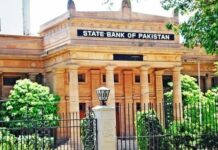DM Monitoring
WASHINGTON: One US Federal Reserve official says there is now a “clearer focus” about the economy’s path forward and a horizon for a fuller recovery. Another says the pandemic’s “endgame” is here. A third predicts 2021 will prove “impressive.”
After a catastrophic spell when economic conditions were so confounded by the coronavirus that the Fed stopped making projections altogether, U.S. central bankers now like what they see.
Even as they concede the riots by supporters of President Donald Trump that shut down Congress last week and concerns about continued violence pose a risk, officials say the transition to a new administration on Jan. 20 and a likely accelerating vaccine rollout have left them optimistic.
The incoming administration of President-elect Joe Biden has said it plans to speed vaccine distribution, and the outgoing Trump administration urged states to loosen rules and offer vaccines to all Americans over age 65 or with chronic health conditions.
For the Fed, even though the country’s short-term political and health risks seem great, they have focused on the more positive prospects of the medium term – with some suggesting the strength of the ensuing recovery may accelerate their plans to pull on some of the steps taken this year to battle the coronavirus recession. Even those arguing policy will likely remain on hold point to consumers’ still-amply-stuffed war chests from last year’s federal relief efforts, including a $900 billion re-topping of aid approved just before year end.
“We have a trillion (dollars) in excess savings. We have checks coming in the mailbox. There will be enough demand” from consumers to keep the recovery on track, Fed Vice Chair Richard Clarida said last week in forecasting an “impressive” 2021.
If 2020 was when shutdowns and disease took the economy to “new and unfamiliar places,” Richmond Fed President Thomas Barkin said, “the future has finally come into clearer focus,” with vaccines likely leading to a fuller reopening by midyear.
‘DIRECTLY LINKED’
Since the Fed last met in mid-December, there has been a whipsaw sequence of events around both the pandemic and U.S. governance, matters both critical to the economy’s performance.
A massive surge in coronavirus cases has been offset by optimism over the initial distribution of two vaccines. Confirmation of the Democratic Party’s control of both the executive and legislative branches was offset by outgoing President Trump’s effort to subvert the electoral outcome, reaching a crescendo in last Wednesday’s assault on the Capitol. Part of the upside scenario seen by Fed policymakers in recent days is based on the incoming Biden administration working more smoothly with a Congress controlled by his party to put additional fiscal support in place and fix what has been a rocky start to the vaccine’s distribution.
It is a unique challenge – managing the national security, legal and political fallout from last week’s events alongside the health and economic policy concerns looming over the country.
But the more the vaccine agenda slips, the worse the economy will fare, say economists who agree that when it comes to the immunization program, speed matters. While they believe the initial slow vaccine distribution will accelerate and eventually end the health crisis, a faster versus slower vaccination rate translates directly into a faster or slower job recovery. It means the difference between less labor market “scarring” or more long-term harm for unemployed workers; between fewer defaulted loans and failed businesses or more bankruptcies and shuttered businesses; and between greater overall acceleration in output or a notably shallower rebound.




